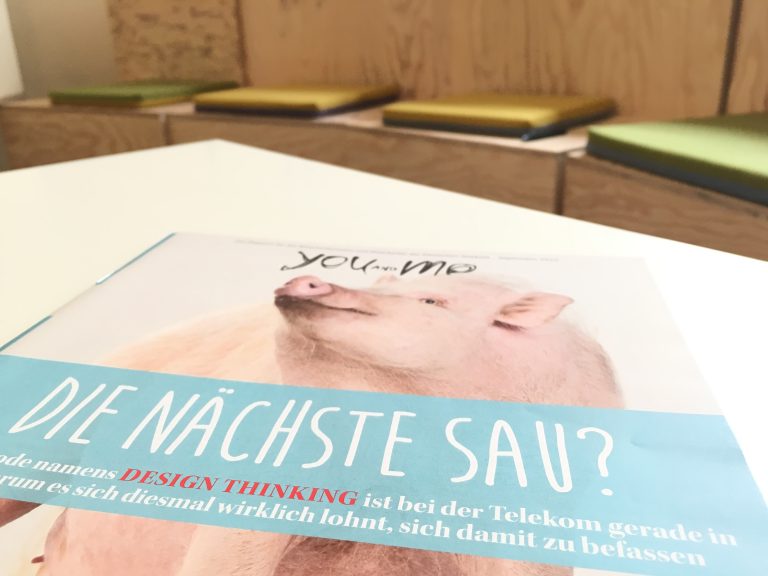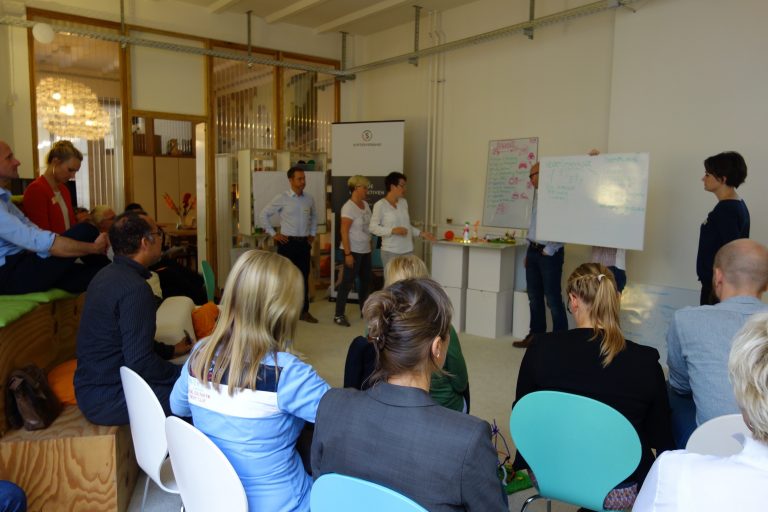
design thinking a mere hype?
Client Telekom
Is design thinking a mere hype? How is the approach proven in practice?
“You and me”, the magazine for the employees of Deutsche Telekom, asks Simon Blake about these matters.
Edition: September 2016
Some of our readers consider the method design thinking merely for the proverbial next sow, which is chased through the village. What do you think?
Design Thinking is more than just a method, it is a new attitude, a different way to develop products, but also processes. It is a user-oriented, interdisciplinary approach in which you can achieve iteratively, that is, in many loops.
Why is there a hype around this approach?
The world is changing rapidly, it becomes more complex, no one knows what is coming next: suddenly a new company like Uber or the travel platform AirBnB emerges overnight. It turns the entire business model of an industry on its head – and then the newcomers also write the rules for the established companies – like Apple with iPod and iTunes of the music industry. As a manager, you then ask yourself: Why are the Silicon Valley more innovative and successful than us?
What are they doing differently?
Start-ups work more creatively and more agile. Classic companies, on the other hand, are planning to do everything they can to achieve this by developing the waterfall principle, with fixed milestones and rigid targets, in order to arrive at the end of a cost- and time-intensive development process: “That is not the right thing.” In design thinking, you work like the start-ups, you go step by step, can make mistakes, rethink ideas, reject them. You get together the most different trades – from the engineer to the sociologist – and network these perspectives, in order to penetrate the complexity of a project and to find a solution.
Putting on the customer glasses is another principle. Is not that trivial?
Yes. This is one of the healthy people’s understanding. But in larger organizations this is not so trivial. Corporations work in a division of labor, in linear structures with firmly defined processes. There is an enormous distance between the management and the customer and the one colleague does not know what the other is doing, let alone what the user wants.
Why do some projects fail despite of design thinking?
You have to practice the methods. Often, the team works great, but then someone from the outside, a controller or someone who releases the budget. Design Thinking must be accompanied by a cultural change that covers all disciplines!
Is design thinking always the right way?
The approach plays its strengths with complex topics, where I know neither solution nor solution. If I already know what I have to do to achieve a desired result, it goes without.
Who’s doing it?
In Germany, the company software forge SAP is a pioneer. Co-founder Hasso Plattner has been supporting Design Thinking for years at Stanford University’s d.School and at the School of Design Thinking in Potsdam. Important products from SAP were developed with the new approach, like the HANA database. In the meantime, numerous companies and organizations rely on design thinking, from Swisscom to the Prussian Castles and Gardens Foundation.
When manager play with Lego
Toys are part of the basic equipment for design thinking. You can visualize wonderful ideas or build a prototype. But is it really practical when sober managers in gray suits are supposed to deal with Legobausteinen at once? Or is it as hopeless as to make a gnarled Niedersachsen to carnival? Not at all! Simon Balke and his colleagues from the Launchlabs have made it their own. And that in Japan, a country where hierarchies are still more powerful than here. Every time the IT leader gave his comment to a large group in the design thinking workshop, the second guard of the managers nodded only dutifully. Own impulses? None. But then came Lego into the play, suddenly all began to busy studzubasteln. The hierarchy was broken!


